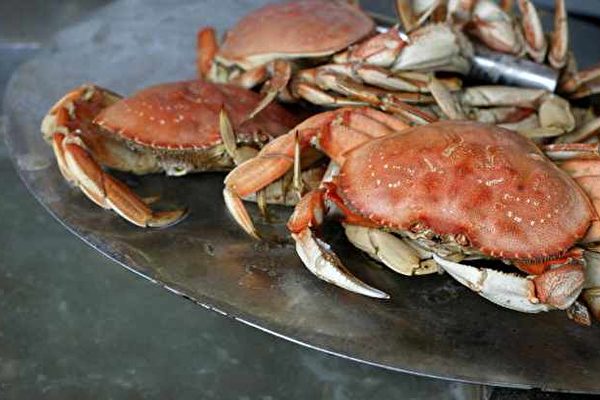New York State’s Department of Environmental Conservation (NYS-DEC) announced last week that the Chinese mitten crab has been spotted in the Hudson River and Long Island Sound.
The department is urging the public to help by taking photos and recording the exact location if they come across the mitten crabs, then reporting it to the state’s environmental agency.
The mitten crab, also known as the Chinese mitten crab, is originally from East Asia. Its name comes from the fact that it has a pair of hairy claws that look like they are wearing mittens. The dense layer of hair on their claws is actually a tough hair-like structure, also found on some insects and geckos.
Despite their cute appearance with furry forelimbs, their presence in New York is unwelcome as the mitten crab has been classified as an invasive species in the United States.
It is believed that they either accidentally arrived in the United States, possibly through ballast water discharge from ships, or were intentionally introduced as food.
According to the environmental agency, mitten crabs were found in the Nissequogue River last winter. This river eventually flows into Long Island Sound.
The concern is that mitten crabs may disrupt the local ecosystem in New York. Currently, the crabs are moving between saltwater and freshwater in New York, potentially causing damage to the ecosystem by competing with local marine life.
The department acknowledges that while the specific impact of mitten crabs in New York is not yet clear, the negative ecological and economic effects they have caused in European and San Francisco waters are well-documented. They have been known to disrupt fisheries and energy industries by stealing bait, damaging fishing gear and catches, and clogging cooling systems at power plants.
The government is seeking the public’s assistance in identifying mitten crabs. Particularly, distinguishing the juveniles which lack the characteristic “mittens” on their claws like the adults.
Identification features of a mitten crab’s juvenile include a notch between the eyes on the shell and four small lateral spines on each side of the shell. Additionally, mitten crabs can be recognized by their equally-sized claws, white-tipped brown hairs on the claws, and typically having eight legs.
As omnivorous creatures, mitten crabs feed on local fish eggs and invertebrates, potentially altering the food chain structure and competing with local species for food and habitat.
Under New York’s Invasive Species Ban, mitten crabs are prohibited from intentional possession, sale, import, purchase, transportation, or introduction of the banned species.
If someone happens to spot one, what should they do? The Smithsonian Museum advises, “Do not release it!” The institution has been monitoring the spread of mitten crabs.
The Smithsonian Museum suggests that if you encounter a mitten crab, do not discard it; instead, refrigerate or place it on ice, take a photo, note where you found it, and contact the relevant authorities.
New York officials also emphasize that if you come across a mitten crab, remove it from the environment and freeze it immediately. Authorities recommend that if people observe a mitten crab, they should take photos and note the precise location, then email the information to [email protected].
Of course, if your refrigerator is full, mitten crabs are edible, but food safety is essential as they may carry parasites.
“Eating mitten crabs” has become a humorous topic of discussion among New Yorkers under the environmental agency’s announcement. Some suggest grilling with butter and garlic, while others recommend deep-frying.
In response to the question of whether mitten crabs are safe to eat, the official account of the state’s environmental agency said, “Yes, mitten crabs are safe to eat as long as properly cooked.”
The official further added, “Like other crabmeat, mitten crabs are rich in protein and minerals and are considered a delicacy in Asia.”

